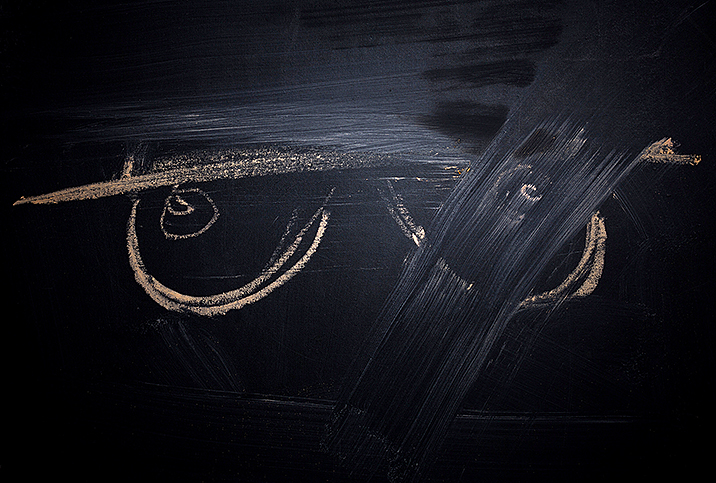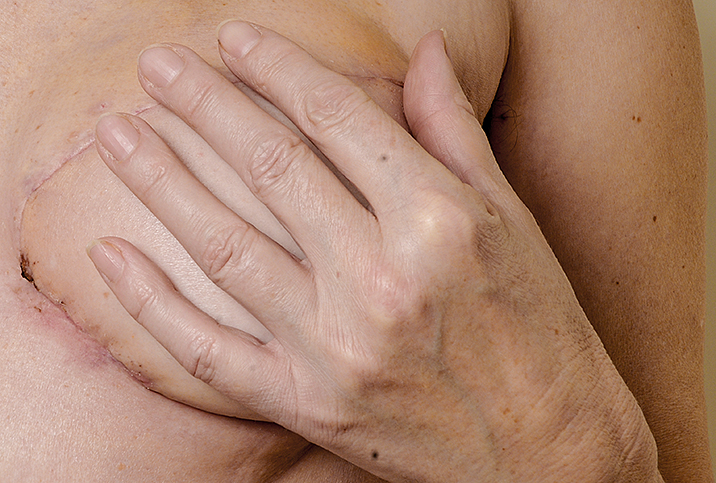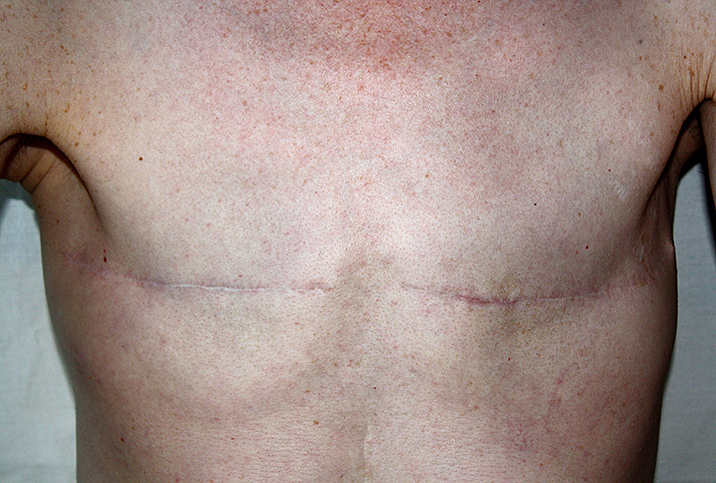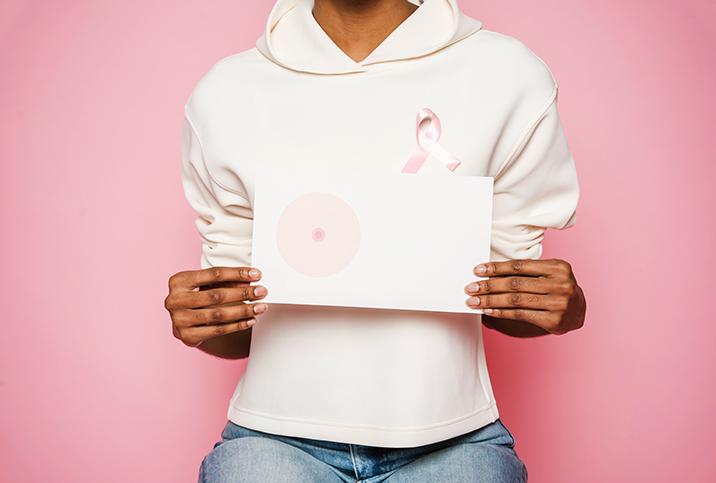How Women Are Transforming Their Mastectomy Scars Into Art

For many years, healthcare professionals recommended single- or double-mastectomy surgery for women who had already been diagnosed with breast cancer. Lately, there’s been a shift. Due to progress in genetic screening and early detection, the number of women undergoing this procedure is on the rise. Now mastectomies are advised not only for women who are diagnosed with breast cancer but also for those who are at high risk for developing the disease.
The number of women undergoing mastectomies increased by 36 percent between 2005 and 2013, according to data from the U.S. Agency for Healthcare Research and Quality (AHRQ).
The number of women undergoing mastectomies increased by 36 percent between 2005 and 2013.
Survivors continue to triumph over breast cancer and not allow it to determine its impact on their lives, including how they mark this invasive and difficult surgery. While some choose to undergo reconstruction after a mastectomy—having their breasts recreated via implant or flap—others decide against reconstruction and simply live with their scars.
What is a mastectomy tattoo?
Some breast cancer survivors from both of those camps are making a further choice with regard to commemorating their fight: adorning their scarred, post-mastectomy chest with tattoos, allowing them to honor their struggle and express themselves.
A post-mastectomy tattoo is a cosmetic, artistic tattoo created on top of the breast area to cover mastectomy scarring. These tattoos give women the chance to “take back” their body and declare victory over their medical experiences, helping them to move forward after experiencing the physical and emotional trauma of a mastectomy.
A woman may choose her mastectomy tattoo artist based on a number of factors, including the artist’s style or location. She may also seek artists who specialize in this type of tattoo.
Design details
Many mastectomy tattoos exhibit feminine illustrations that follow the curves of the breast as a way to recreate the femininity some women feel they lose with a mastectomy. However, options are limitless. Women commonly request floral designs, landscapes or whimsical scenes. Lotus flowers are popular, as are cherry blossoms, butterflies and birds.
Women of all ages and backgrounds are sharing their mastectomy stories and subsequent tattoos on social media, inspiring other breast cancer survivors to get inked.
One of the most widely known advocates of the post-mastectomy tattoo is Inga Duncan Thornell, a Seattle life coach who chose to have a prophylactic double mastectomy in 1993 after her stepmother died from breast cancer and her mother was diagnosed with it.
A post-mastectomy tattoo is a cosmetic, artistic tattoo created on top of the breast area to cover mastectomy scarring.
Thornell has been quoted as saying her tattoo has allowed her to move past not just her scarring, but also the loss of her breasts. The tattoo is “complete and whole” on its own and goes beyond being “a mere cover-up for scars,” she said. Over time, it has become a part of her self-expression, making her “feel like (herself) but more colorful.”
The rising interest in post-mastectomy tattoos has even inspired an annual event in New York City that connects survivors with tattoo artists. Noel Franus, an ad agency executive from Boulder, Colorado, founded P.INK (Personal Ink) after his sister-in-law elected to get a tattoo following her diagnosis, treatment and breast reconstruction. On “P.INK Days,” participating tattoo studios close their doors for private sessions with women who have undergone mastectomies. These women receive donated tattoos from specialized artists. The organization also has lists of tattoo resources and information on its website.
Considering a mastectomy tattoo?
Check with your doctor first if you’re considering getting a tattoo. Your operation sites need to be completely healed by the time you go under the tattoo pen. Normal healing from surgery takes about a year, but ideally, you should wait a little longer before getting a tattoo. You should have also finished any chemotherapy or radiotherapy treatment.
Look up skilled tattoo artists near you who have previous experience working with mastectomy clients. These artists will be able to create the best design for your body with respect to your journey.
Remember to look up reviews and portfolios of any tattoo shops or artists you’re considering. They should provide a clean and sterile environment, answer all your questions, and make sure you are satisfied with their business operation before you agree to work with them.
Know the risks
As with regular tattoos, post-mastectomy tattoos come with certain risks. Although complications may not be probable, they are still possible, and women should understand any potential issues before getting inked.
You may have an allergic reaction to pigments your artist uses. You can check this by asking your artist to test a small amount of ink on a discreet area of your body. Diseases such as HIV and hepatitis have also been linked to tattoos through the use of needles, but this largely occurs in unsanitary studios. All credible tattoo artists should provide a clean, sterile environment and equipment.
Tattoos can get infected, so talk to your artist and doctor about ways to keep the area of your tattoo clean and safe.
Check with your doctor first if you’re considering getting a tattoo. Your operation sites need to be completely healed by the time you go under the tattoo pen.
Finally, you should keep in mind that the initial color of your tattoo may fade with time. However, this is common and you can always have your tattoo retouched when you want it to look as good as new.
Remember, your body may be more sensitive after you undergo breast cancer treatment and surgery. Therefore, it’s essential you consult with your doctor and work closely with your artist of choice.
For more information on risks and taking proper precautions, visit Regional Cancer Care Associates.


















